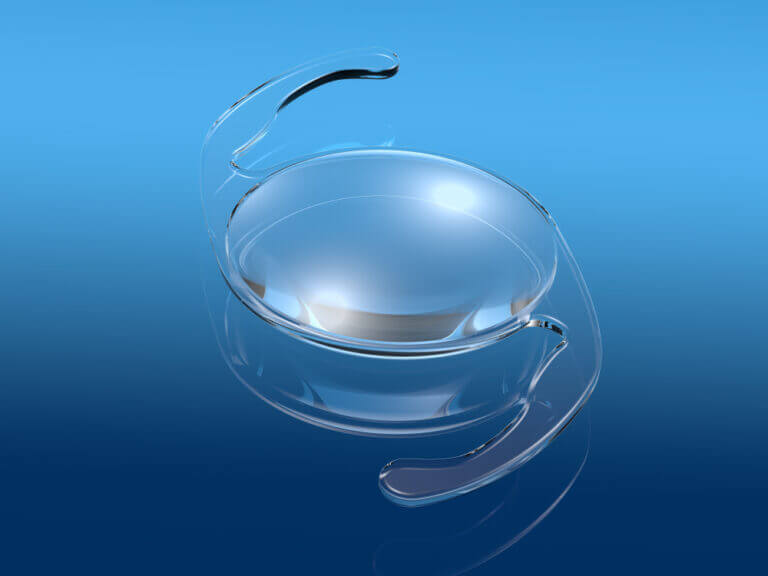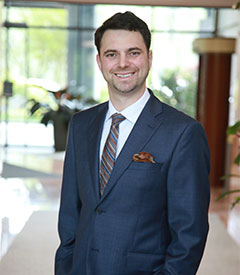Cataracts
What is a Cataract?
A cataract is a common condition that causes a clouding of the eye’s natural lens, and affects millions of people each year, including more than half of all Americans over the age of 65. Cloudiness develops as a result of a buildup of protein in the lens.
Cataracts cause a progressive, painless loss of vision. The lens clouds naturally as we age, causing people over the age of 65 to see a gradual reduction of vision. However, cataracts are considered part of the natural aging process and are not a serious condition that requires prompt medical attention. The exact cause of cataracts is unknown, although it may be a result of injury, certain medications, illnesses (such as diabetes), prolonged exposure to ultraviolet light and smoking.
Diagnosing Cataracts

Your doctor may perform a series of tests in order to diagnose a cataract. A dilated eye exam will be performed to test the vision and to examine the condition of the lens and other parts of the eye. Your doctor may also perform tonometry, a procedure that measures the pressure in the eye.
Symptoms Of Cataracts
Patients with cataracts often do not experience any symptoms when the condition first develops. Cataracts will continue to progress with no apparent pain, although patients may experience:
- Blurred or hazy vision
- Double vision
- Poor vision in bright light
- Seeing halos around lights
- Poor vision at night
- Yellowish tinged vision
- Frequent changes in eyeglasses or contact lens prescription
Cataract Surgery in Atlanta
The future is now! The surgeons at Georgia Eye Partners are proud to offer the latest advancement in cataract surgery to the Atlanta area, Custom Bladeless Laser Cataract Surgery. When visual impairment begins to interfere with your ability to read, work or do the things you enjoy, you may want to consider cataract surgery to restore your vision. Cataract surgery is the most commonly performed surgical procedure in the U.S., and can be performed quickly and easily with a success rate of over 90 percent and a minimal risk of complications.
Georgia Eye Partners offers both traditional cataract surgery and bladeless laser cataract surgery:
What happens the day of surgery?
Traditional Cataract Surgery
Cataract surgery has been performed for many years using handheld devices to dissolve the cataract and manual blades to create necessary incisions on the eye. This is a good surgery and it’s how cataract surgery has been done for decades. Traditional cataract surgery is done with the surgeon’s hands using blades to cut into the eye. Ultrasound energy then dissolves the cataract, which is then removed from the eye, with minimal risk of complications.
Custom Bladeless Laser Cataract Surgery
Custom Bladeless Laser Cataract Surgery is laser assisted, allowing for greater precision and safety. The majority of the surgery is done by a laser versus by a surgeon’s hand as in traditional cataract surgery. During the surgery the laser can fine tune your vision by correcting variable amounts of astigmatism you may have, to give you the best, most crisp, clearest vision possible.
Custom Bladeless Laser Cataract Surgery is the most gentle way to remove a cataract. This allows for less inflammation after surgery because it is less invasive than the traditional surgery. Therefore, you could potentially see better sooner. Because the procedure is customized to your eye and computer controlled it results in a more precise result utilizing cutting edge technology to produce the best possible surgical outcome.
Cataract Self-Test
Are you a good candidate for cataract surgery?
What is an Astigmatism?
Intra-Ocular Lens Options
There are four options to choose from. During your comprehensive consultation, one of our providers will let you know which option is going to be best for you.

- Monofocal- The standard lens; – mono meaning one. It gives you one range of vision to see clearly but you will need glasses for the other ranges of vision.
- Multifocal – This lens is the best option to make you less dependent with your glasses so that you don’t have to wear them to see. The goal of this option is to allow you to see distance, intermediate, and near without being dependent on glasses.
- Toric – This lens is designed to correct astigmatism. Not every person has enough astigmatism to make this lens necessary.
- The Light Adjustable Lens
The Light Adjustable Lens is the first and only IOL that allows for customization and fine-tuning after cataract surgery. This innovative intraocular lens allows for precise and customizable vision correction.
Unlike other IOLs, which do not allow for vision to be changed after implantation, the Light Adjustable Lens is made of a photosensitive material that will enable it to be adjusted to your specifications using ultraviolet treatments.
These light treatments help you achieve optimal visual acuity with micro-adjustments to the lens power. The Light Adjustable Lens is especially well-suited for patients with astigmatism, as it can correct up to 0.75 diopters of the refractive error.
Patients with the Light Adjustable Lens must wear protective glasses to ensure their vision is not altered by UV light before it reaches the desired outcome. Once the desired results are achieved, you’ll lock in your vision with a final light treatment.
Most patients only need three light treatments. The Light Adjustable Lens puts the power of customization in the patient’s hands, ensuring that vision is crisp and clear and meets their needs. Schedule an appointment to find out if the light adjustable lens is right for you!
Light Adjustable Lens (LAL) Patient Journey
About the Light Adjustable Lens (LAL)
After Surgery Instructions
Although most people can resume everyday activities 24 hours after cataract surgery, there are a few instructions that you will be asked to follow. They include:
- Don’t do any strenuous activities for a few weeks. Avoid rigorous exercise and heavy lifting.
- Don’t drive. The length of time after cataract surgery before you can drive depends on a number of factors – your doctor will tell you when it is safe to resume driving.
- Follow your doctor’s orders regarding any antibiotic and anti-inflammatory eye drops. These are important to prevent infection and inflammation and ensure proper healing. If you have difficulty in administering them, get a friend or family member to help you out. If you are concerned about how to use your eyedrops, please contact our office and we will connect you with your surgeon’s team.
- Stay away from dusty areas. It’s a great idea to have your house vacuumed and cleaned before surgery, as your eyes will be sensitive to airborne allergens such as dust.
- Don’t rub your eye. Eye rubbing is a quick way to develop a nasty infection. It’s never a good idea, even when you aren’t recovering from surgery.
- Don’t swim. It’s best to avoid swimming or hot tubs for a week after surgery.
- Don’t wear make-up. Ask your doctor when you can resume doing so.









